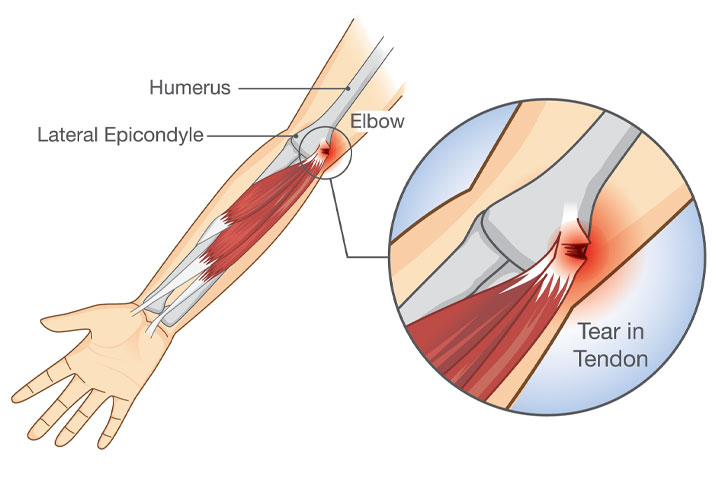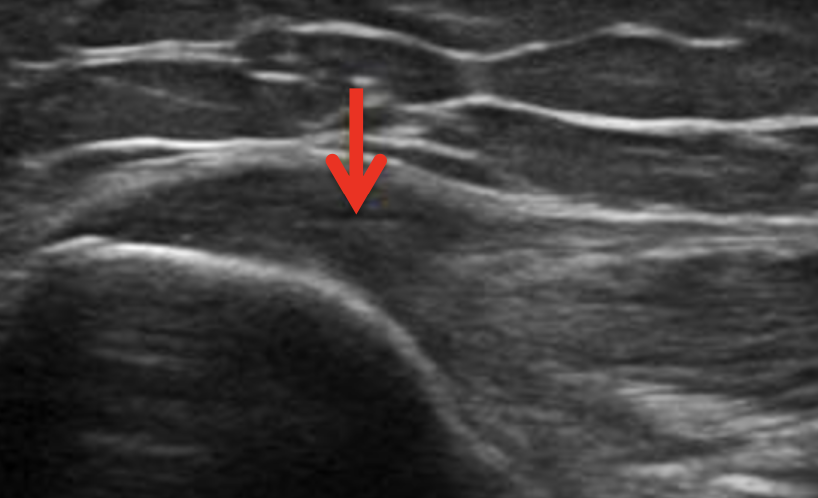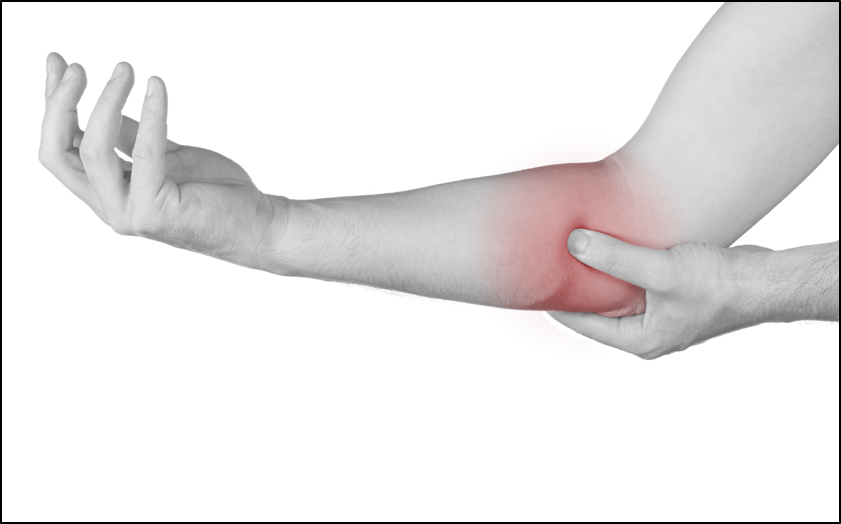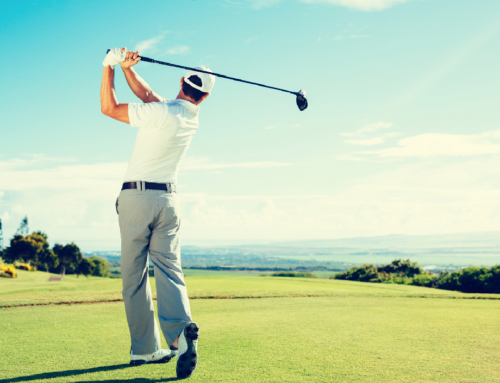What is Golfer’s Elbow?
Golfer’s elbow is a common injury of the forearm, which often affects golfers, racquet sport players and weightlifters, but is also prevalent in manual workers and people who do a lot of computer work. The medical name for golfer’s elbow is medial epicondylitis, because it is a condition that causes pain over the medial epicondyle of the elbow.
It is a type of tendinopathy (also known as tendinitis), which usually causes a dull ache or burning pain on and around the bone on the inside of the elbow, and is aggravated by repetitive, overuse of the flexor tendons in the forearm.
It is relatively easy to diagnose through a clinical examination, and depending on the severity, responds very well to exercises based physiotherapy and conservative or non-surgical management. In more severe cases or if there are small tears within the tendon, these can be more difficult to treat and may require additional treatments such as shockwave therapy or Injection Therapy.
Anatomy of Golfer’s Elbow
The elbow joint is made up of the upper arm (the humerus) and the forearm (the radius and ulna). It is held together by muscles, tendons and ligaments, which all work in partnership to provide both mobility and strength to the elbow.

The medial epicondyle is located at the tip of the ulnar (the bony bit on the inside of the elbow). This bony prominence is the attachment area of the flexor muscles of the forearm i.e. the muscles responsible for gripping and curling your wrist and hand upwards.
These forearm flexor muscles run along the inside of your forearm and converge into a single tendon called the common flexor tendon, that anchors the muscles to the arm bone (ulna).
What causes Golfer’s Elbow?
Golfer’s elbow is an overuse injury, caused by repeated strain of the common flexor tendons. When the forearm muscles contract they pull on this tendon; if these forces are too strong and occur too frequently, it can cause swelling of the tendon and create microtrauma (small tears) which results in pain, swelling and inflammation.
It tends to be activities that involve gripping, lifting, pulling or twisting that bring on golfer’s elbow and in most cases, symptoms develop slowly over a period of weeks or months.
Sometimes this repeated strain can occur more suddenly, after a short period of excessive use of the hand and wrist, such as doing a weekend of DIY or playing in a long tennis tournament, or doing excessive typing/computer work.
Risk Factors of Golfer’s Elbow
There are a number of contributing factors that lead to golfer’s elbow developing; poor conditioning, incorrect technique or equipment, as well as frequency and intensity of the activity, can all have an impact.
It affects both men and women, although women are actually more likely to be affected. The most common age group to suffer from this condition are those between the ages of 40-60. Approximately 90% of people with golfer’s elbow develop it from doing something other than playing sports.
Some of the highest risk factors are:
- Age – 40 or over – although it can affect people of all ages
- Sex – More prevalent in females
- Occupation – Those working in manual jobs, computer based work, chefs, dentists.
- Sports – People who play racquet sports, golf, weight lifting.
- Obesity – People with high BMI are more likely to be affected.
What are the symptoms of Golfer’s Elbow?
Typically golfer’s elbow symptoms include a dull or burning pain, and weakness when performing gripping tasks, making a fist or repetitively bending the wrist and fingers. There is usually pain directly over the bony, medial epicondyle, and there may also be tender points and soreness in the muscles along the inside of the forearm. Some people also experience neck pain or stiffness. In more severe cases, the nerve can be compressed causing tingling or pins and needles in the hand.
Most elbow movements are fairly pain free, despite that being the area of pain.
Signs and Symptoms:
- Pain and tenderness, plus occasional swelling on the bone and muscles on the inside of the elbow.
- Pain that is made worse by gripping and repetitive wrist movements
- Aching pain in your forearm or wrist
- Tightness in the forearm muscles.
- Pain when you try to make a fist.
- Difficulty performing common daily tasks like turning a door knob, opening a jar, chopping vegetables, or wringing out a dish cloth.
- Reduced grip strength.
- Tingling or numbness in your hand – usually the ring and/or little finger.
How is Golfer’s Elbow diagnosed?
Diagnosis can be confirmed by your Physiotherapist during a clinical examination.
They will carry out a comprehensive, subjective and clinical assessment to obtain an accurate diagnosis.
Initially you will be asked about your pain and what the aggravating and easing factors are. Your therapist will also ask questions about your general and past medical health, and what your normal activity/exercise routine is.
The clinical examination may include:
- Assessing range of movement of the hand, wrist and elbow.
- Looking for redness or swelling around the elbow
- Gently feeling around the elbow joint and along the forearm muscles to pinpoint the location of your pain.
- Assessing your grip strength.
- Measuring muscle length and flexibility
- Looking more globally at other areas that might also be affected or contributing to your symptoms, such as your neck, back and shoulder.
Sometimes an X-ray may be requested to exclude other causes of elbow pain like bony abnormalities, osteoarthritis or fractures, but it has little diagnostic benefit if golfer’s elbow is suspected.
An ultrasound scan is the easiest and most sensitive way to identify any tendon degeneration, tears or inflammation. An ultrasound scan is reserved for patients if; we are unsure of a diagnosis, are suspicious of a large tear and/or those who still experience pain despite treatment.
Ultrasound Scan
An ultrasound scan is able to clearly visualise the quality of the tendon and inflammation associated with tendinopathy. It is regarded as the gold standard imaging technique for assessing tendon, structure and pathology. It is especially useful when diagnosing a tendon tear, which may influence which treatment is best for you.

Ultrasound image showing swelling and thickening of the common flexor tendon (Golfer’s elbow).
At Complete Physio we have a team of Clinical Specialists who can perform an ultrasound scan as part of their initial assessment. There is no extra charge for this scan, and you don’t require a GP referral. However you will need to be booked in with one of our specialist clinicians, so please inform our booking team if you think you will need an ultrasound scan.
To book an appointment to see one of our clinical specialists please call 0207 482 3875 or email info@complete-physio.co.uk.
How is Golfer’s Elbow treated?
Physiotherapy and Rehabilitation
PPhysiotherapy has been proven to be highly effective in the short and long-term management of 90% of all golfers’ elbow.
It’s important that your treatment starts as soon as possible in order to ensure that you get the best outcome. The key to the initial stages of consevative management is to keep the tendon from breaking down further, and allowing it to heal. Following this you will need to work on regaining full range of movement and restoring maximum muscle strength and function.
Complete Physio are trusted by world renowned sports medicine consultants and orthopaedic surgeons, to help manage their patients suffering with tendon pain.
Your treatment programme will be specifically designed for your individual needs, based on the findings of your assessment.
This may include some or all of the following:
- Patient education – Having a good understanding of your condition and what is required to resolve your symptoms is key. It is important that you feel you are taking an active role in your treatment and your recovery.
- Relative rest and modification of activity – Initially you will need to rest your hand and wrist in order to allow the pain and inflammation to settle, and the flexor tendons to heal. You may need to wear a wrist splint for a short period of time, and modify the activities that you do so that you avoid repetitive and painful movements.
- Manual therapy – Your physiotherapist may use manual therapy techniques, such as joint mobilisations and massage to the surrounding muscles. This will help to reduce muscle tension and soreness.
- Pain management – You may also benefit from taking over the counter medication such as painkillers and anti-inflammatories.
- Specific loading exercises – Sports medicine research has shown that heavy slow resistance (HSR) strengthening exercises are a crucial aspect of tendon rehab. Your physiotherapist will take you through these step by step, ensuring that you don’t overload the tendon too quickly, and will monitor your progression closely. This is a key component of your rehab programme and requires you to be committed and consistent, especially with any home based exercises that you are prescribed.
- Muscle strength – Weakness or imbalances of the muscles in the shoulder and upper limb can cause or contribute to problems with tennis elbow. Your physiotherapist will put together a resistance exercise program to ensure all your muscle groups are strong and working in synergy. This will aid your recovery and prevent recurrence of injury.
- Acupuncture – Acupuncture or dry needling treatment has been shown to help provide significant pain relief for golfer’s elbow. Acupuncture treatment can help to reduce inflammation and improve blood flow to injured areas, which aids and speeds the healing of tendonitis.
Range-of-movement exercise – These exercises are designed to mobilise the joint and stretch out your muscles to help restore normal range of motion.
Golfer’s elbow brace and sports taping – When you are returning to activities, a special brace or specific sports taping techniques can be used to reduce the pressure and offload the tendon, which will help limit the risk of reaggravating your symptoms. - Range-of-movement exercise – These exercises are designed to mobilise the joint and stretch out your muscles to help restore normal range of motion.
- Golfer’s elbow brace and sports taping – When you are returning to activities, a special brace or specific sports taping techniques can be used to reduce the pressure and offload the tendon, which will help limit the risk of reaggravating your symptoms.

- Functional and sports specific training – once your pain has settled and you have regained good strength and range of movement, you can progress to more demanding, sports specific rehabilitation exercises.
Prior to starting your treatment programme your physiotherapist will set a number of clinical and personal goals with you. Throughout your sessions they will keep monitoring and revisiting these, to make sure that your recovery is on track
If your elbow symptoms are not settling or your progression is slow, there are a number of other treatment options that are available at Complete, including Shockwave Therapy and Injection Therapy
Shockwave Therapy – also known as Extracorporeal Shockwave Therapy (ESWT) for Golfer’s Elbow
Shockwave therapy is an effective, non-invasive, evidence-based treatment option for treating tendinopathy, including golfer’s elbow. ESWT produces a series of powerful sound waves which provide a small dose of controlled microtrauma to the forearm extensor tendons. The research shows that shockwave stimulates the tendon’s natural healing process, initiating new tendon regeneration. Pain is also reduced, as the local nerve endings surrounding the tendon become desensitised by the pulses.
It is recommended that patients have a minimum of 3 sessions for the treatment to be effective
Complete has shockwave therapy available at three of our clinics – Bury Street (next to Gherkin), Chelsea and Angel clinics. If you would like more information about shockwave treatment, or if you would like to book an appointment to see one of our tendon specialists please call us on 0207 482 3875, or email us at info@complete-physio.co.uk and we will call you back.
Injection therapy for Golfer’s Elbow
If your pain has not improved with physiotherapy or ESWT, ultrasound guided injection therapy may be appropriate. Injection therapy is used within musculoskeletal medicine to reduce pain and inflammation, allowing you to effectively rehabilitate your condition.
Steroid injection
Steroid injections may be required if pain is persistent and nothing else is working. A mixture of local anaesthetic and corticosteroid (a potent anti-inflammatory) is injected directly into the affected area, under the guidance of a real-time ultrasound scan.
Research has shown that guided injections are more accurate and are more effective at reducing pain than non-guided injections.
It’s recommended that a course of physiotherapy commences within 1-2 weeks of the injection.
Ultrasound-guided platelet-rich plasma (PRP) injection
PRP has been clinically proven to speed up the healing process and provide pain relief of golfer’s elbow. It is a natural, safe treatment, which uses components of your own blood to heal and regenerate the tendon. There are very few side effects of this treatment and the procedure is well tolerated.
With PRP treatment, a small amount of blood is extracted from a vein in your arm. This blood is then spun at high speeds in a centrifuge machine to separate out the PRP. The PRP is then injected, under ultrasound guidance, in and around the flexor tendons to target the most affected regions. If the muscle or tendon is torn PRP can be directly injected into the tear to facilitate the healing process. PRP is a natural, safe treatment which has powerful healing properties, allowing the body to regenerate the tendon quickly and effectively. Research results suggest that a series of three injections is required to achieve maximum benefit.
Hyaluronic Acid injection
Hyaluronic Acid is a less common injection option for Golfer’s elbow but does provide a natural, safe treatment option. Hyaluronic acid is a replica of a naturally occurring substance within the body. They tend to be used to treat chronic joint pain such as osteoarthritis, rather than tendon injury. It is often used, with a local anaesthetic, as a safe alternative to steroid.
Complete Physio has a specialised clinical team who have completed extensive training to be qualified to administer injections, and also prescribe medications independently which means we do not require a referral from your GP.
You will need to be booked in with one of our Clinical Specialists if you think that you might require either an ultrasound scan or an injection. Please make this clear at the time of booking.
Surgery for Golfer’s Elbow
As a last resort then surgery is an option. If this is looking like it is required, your physio will be able to refer you to one of the highly specialist and experienced Orthopaedic consultants that we work with in London.
Golfer’s elbow surgery is done as a day case. It involves making an incision along the arm over the medial epicondyle, the affected tendon is exposed and the damaged segment is removed. The goal of the surgery is to release the pressure off the tendon and to help the tendon to repair and heal.
After any surgery you will be referred back to our clinic for post op rehabilitation. This will often begin about a week after surgery and you will be supported throughout the whole of your recovery process.
To make a booking please call 020 7482 3875 or email info@complete-physio.co.uk
Don’t let pain hold you back, book now!



